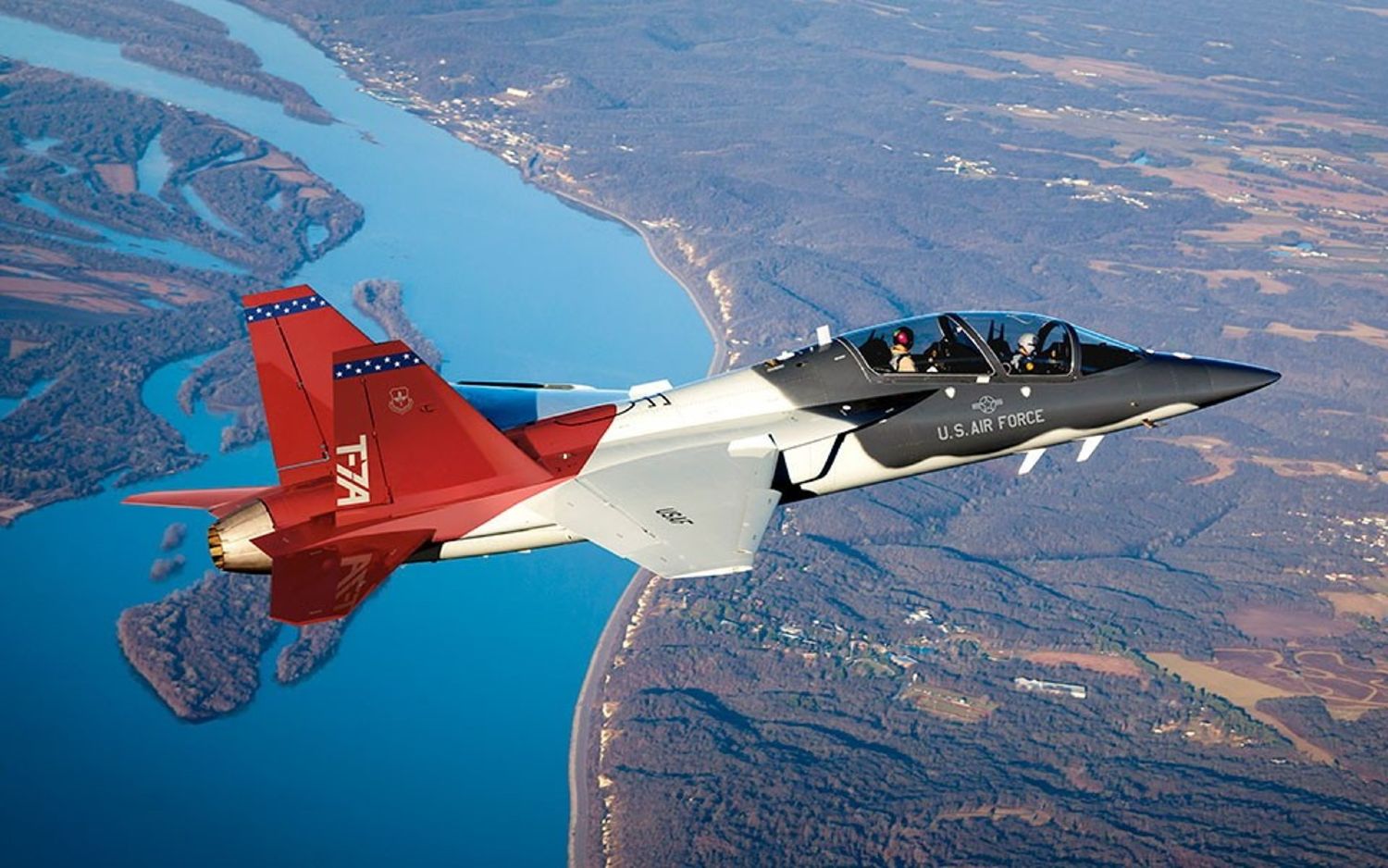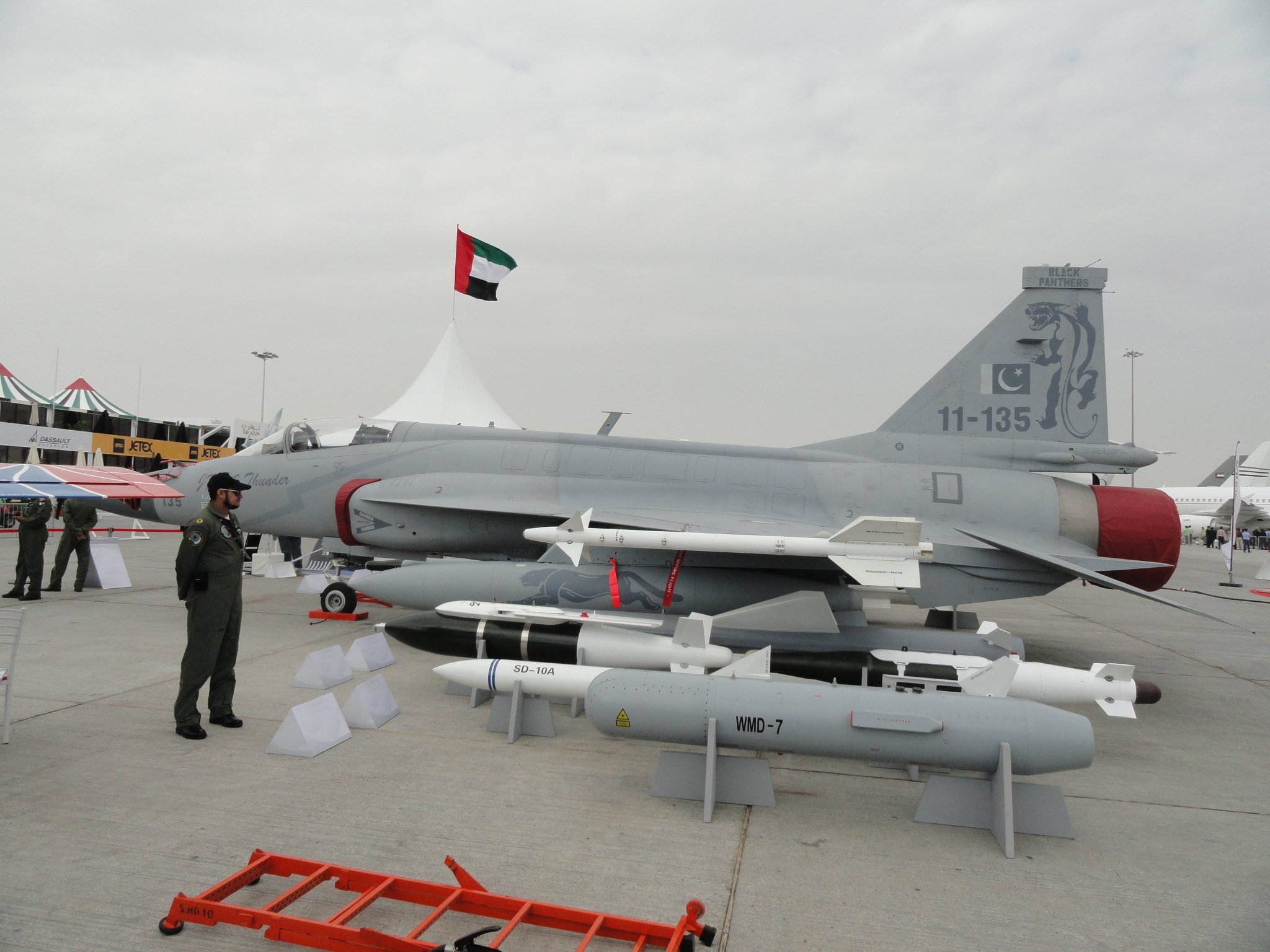Despite falling behind schedule in production, the T-7A Red Hawk trainer aircraft finally achieved a milestone as the Air Force flight testing kicked off on June 28.
Taiwan Plans To ‘Blow Up’ Invading Chinese PLA Troops With Recon Drones Turned Into Bombing Machines
The T-7A Red Hawk’s Air Force flight testing began with a USAF pilot taking off from St. Louis, Missouri, facilities of the contractor Boeing. The T-7A flown by the pilot was a pre-production engineering and manufacturing development (EMD) aircraft.
The first of five aircraft supplied by Boeing to support the Air Force’s T-7A test program, 21-7005, was the one that took the inaugural flight. The aircraft has been developed together in partnership with Swedish contractor Saab.
As stated by Boeing, the event ushers the beginning of the T-7’s technical and manufacturing development phase and the first official test flight flown by an Air Force pilot. The news of the first flight testing follows Boeing’s previous announcement that one of these T-7As had successfully passed ground taxi tests.
The Red Hawk is expected to eventually replace the Air Force’s archaic T-38 Talon jet trainers, which are becoming more and more challenging to run and maintain.
A press statement released by Boeing stated that Maj. Bryce Turner of the 416th Test Squadron, director of the T-7 Integrated Test Force, and Steve Schmidt, chief test pilot for the Boeing T-7, flew the tandem-seat jet for 63 minutes to evaluate its fundamental flying characteristics. Turner claimed in a statement that the aircraft “performs like a fighter” and was stable in flight.
In its news statement, Boeing also highlighted the T-7A program’s digital design features, claiming that these features allowed the program to get from a “firm concept” to an actual flight test in 36 months.
This is especially noteworthy as the T-7A has long been projected as a model for the advantages of digital engineering and design technologies.

For the Red Hawks, using digital design approaches has already resulted in an 80% reduction in assembly time, enabling the production of more planes in lesser time. The Red Hawk’s development process was quicker than comparable land-based vehicles, taking less than three years from the concept stage to the first flight.
Previously, Boeing’s pre-production prototype T-7As, designated T-1 and T-2, were flown during the T-X competition, which it won in 2019. Since then, the two aircraft have logged hundreds of hours, allowing Boeing to check various design parts.
Retired Gen. Mike Holmes, who was in charge of Air Combat Command at the time, took a ride in one of the two prototypes earlier. However, it wasn’t a test flight. The aircraft that flew on June 28 was the first one representing the production configuration, which differs from the prototypes flown earlier.
If everything works out, the aircraft of this group will open the door for fully functional manufacturing aircraft. This could be great news for the manufacturing partners and the US Air Force since the ambitious trainer aircraft has been marred with delays.
A recent report published by the US government’s top watchdog Government Accountability Office (GAO), lambasted the Pentagon and the manufacturers for unprecedented long delays, saying that the two may require something akin to “marriage counseling” over the year-long delays in finalizing the company’s T-7A Red Hawk trainer that could cost the Air Force billions of dollars.
The Air Force had stated that it hoped to start receiving the first five T-7A EMD prototypes this year and put the new jet trainers into service by next year. However, the service has now delayed the delivery of the EMD prototype until at least December 2025 and anticipates that the Red Hawks won’t enter service before 2027.
According to Boeing, the supply chain, labor issues, and inflation have delayed the program. However, with the program now catching pace with the first flight, the US may finally be getting ready to replace its age-old trainer and fly an aircraft that can challenge Chinese and Russian fighters.
Competitor To Chinese Fighters, Threat To American Adversaries
The T-7A is powered by a single GE-F404 turbofan engine, which produces about 17,200 pounds of thrust. Twin tails, slats, and large leading-edge root extensions (LERXs) allow for low-speed handling and agility, making T-7A’s performance similar to the USAF F-16 but at a much lower operating and acquisition cost.
Once in service, the T-7A’s open architecture software will make it very adaptable to its predecessors to incorporate new capabilities and training elements to keep pace with the broader modernization of the Air Force. Additionally, the T-7A, due to its small size, can be very difficult to spot during within-visual-range fights.

Last year, in his article for the EurAsian Times, Amit Gupta, an Associate Professor of Indo-Pacific Studies at the USAF Air University Culture and Language Center, noted that “most nations’ airpower requirements are not centered around the expensive fifth or 4.5-generation fighters like the French Rafale, the American F-35 Lightning, or the Eurofighter Typhoon.”
This is one of the reasons why a trainer aircraft that can also be armed to make a light fighter jet are becoming increasingly popular. The analyst also noted that the South Korean FA-50 is one such aircraft, and so is the Chinese L-15 trainer jet, allegedly being weaponized at the cost of under $20 million.
The article argued several countries are looking for cost-effective fighter jets that fulfill their security needs without forcing them to empty their coffers. For instance, the older F-16 has a great reputation globally, and countries as varied as Denmark, Pakistan, and Israel swear by the aircraft, which has a remarkable record in combat.
However, the newer versions of the aircraft are unaffordable for most nations. The Chinese have tried their luck to step up and have sold its JF-17 to Pakistan and Nigeria for low costs. However, for several reasons, the aircraft has had little export success.

This is where a case has been made for the T-7A Red Hawk to be sold to countries looking for an affordable fighter jet. “A weaponized Red Hawk with a capable but not expensive radar would be the way to go for most American allies, and it would allow Washington to arm nations in South America and Africa looking at Chinese and Russian planes,” Gupta had argued.
Some reports have also noted that the USAF may view the T-7A as a viable next-generation aggressor platform as there is an increasing need for more adversary support for the 5th-generation stealth fighters who are not challenged by small formations of fighters.
Against that backdrop and USAF pilots concluding that it “performs like a fighter,” it may usher in a new era for the T-7A Red Hawk aircraft.
- Contact the author at sakshi.tiwari9555 (at) gmail.com
- Follow EurAsian Times on Google News




